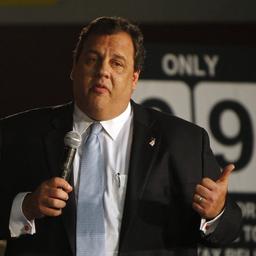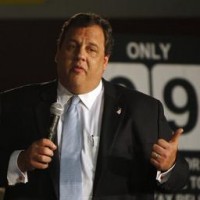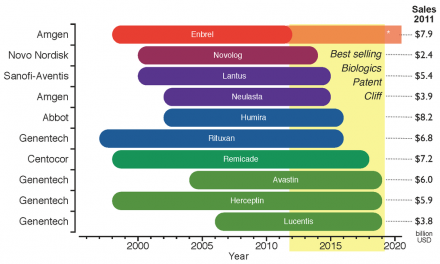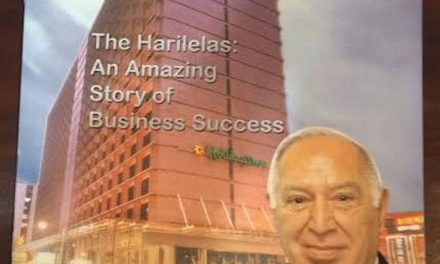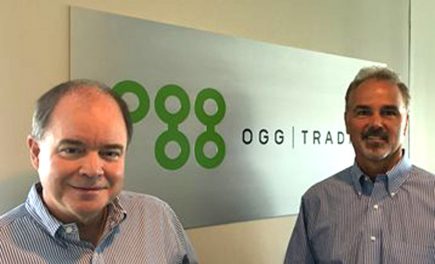One-shot revenues, tax cuts, pension debt, and borrowing blow $2.5 billion hole in FY2014 budget
By Mark J. Magyar – NJ Spotlight
June 25, 2012 – If the Legislature approves the proposed $31.7 billion FY13 budget and the tax cut that Gov. Chris Christie is demanding, New Jersey will face a built-in $2.5 billion hole in the following year’s FY14 budget – a gap almost twice as large as the combined increase in income, sales, and corporate taxes that Christie is projecting for the year ahead, a NJ Spotlight analysis shows.
Even if the Democratic-controlled Legislature decides next year that the state cannot afford the controversial tax cut, the state would still need to come up with $2 billion in revenue growth in Fiscal Year 2014 just to cover the required increases in pension costs, transportation borrowing and already-approved business tax cuts, and the more than $1 billion in one-shot revenues built into the Fiscal Year 2013 budget.
In short, with or without a tax cut, New Jersey is facing a net budget shortfall of $500 million to $1 billion next spring.
It gets worse. That’s actually the best-case scenario. That analysis assumes that Governor Christie’s projections of 5.9 percent growth in income, sales and corporate taxes – the most optimistic in the nation – will come in on target.
If David Rosen, budget officer for the non-partisan Office of Legislative Services, is correct, Christie’s revenue projections will prove to be $724 million to $824 million too high. And as Rosen noted, OLS’ revenue projections are bullish: Moody’s Investors Service pointed out that if New Jersey’s economy continues to grow at the same pace as this year, revenues could be off as much as $2 billion.
Nevertheless, the Democratic majorities in the Senate and Assembly are poised to vote overwhelmingly today to approve a $31.7 billion budget virtually identical to the one Christie has proposed, even though they acknowledge that the budget is built upon revenue estimates that they don’t believe.
Meanwhile, the Republican Senate and Assembly delegations are expected to unanimously vote against the budget. No, not because it is unbalanced or loaded with $1 billion in “one shots,” but because, like Christie, they are angry that the Democratic majority is refusing to lock the state into a $183 million income tax cut in the upcoming year that would cost the treasury $576 million the following year.
So how did we get here? Aren’t Christie and the Republicans supposed to be the fiscal conservatives? And if Christie’s wrong, why would the Democrats go along?
A Game Of Political Chicken
It’s politics – a game of chicken, really – that pits Christie, a top contender for the GOP vice-presidential nomination who wants an income tax cut to take to the Republican National Convention in Tampa and/or into his 2013 gubernatorial reelection campaign, against Democratic legislative leaders determined not to be outdone by the popular GOP governor in the tax cut race.
Christie’s first two budgets (Fiscal Years 2011 and 2012) were models of spending restraint and conservative revenue estimates. Christie made deep cuts in property tax rebates, school aid and other social programs, and went into his first full fiscal year with an $873 million surplus that represented almost 3.1 percent of his $28.3 billion budget. When he went into this fiscal year with a still-robust $580 million surplus, Senate President Stephen Sweeney (D-Gloucester) predicted that Christie was setting the stage for a major tax cut in 2012. He was right.
New Jersey was coming off a calendar year 2011 in which the state’s economy shrank by 0.5 percent, putting the state 47th in the nation in economic growth. Unemployment remained above 9 percent , a full percentage point above the national average.
Yet Christie made a 10 percent across-the-board income tax cut the centerpiece of his State of the State speech in January. Phased in over four years, Christie estimated it would cost just $183 million in the fiscal year that begins this Sunday, but the cost would jump to $575 million the following year and top out at almost $1.4 billion two years later in FY2016.
State pension payments already were scheduled to rise more than $600 million a year for the next six years, and an already enacted business tax cut was cost another $480 million in lost revenue by the year the income tax cut was completed.
Christie’s ‘New Jersey Comeback’
Christie declared that the “New Jersey Comeback” had begun, and that his two years of conservative policies had brought such a surge of revenues that he could fully fund the state’s pension obligations, increase school aid and social programs – and still cut income taxes by $183 million.
To pay for all of this, the Christie administration projected that after revenue growth would jump from 2.7 percent this year to 7.3 percent next year – by far the highest growth rate in the nation. It wasn’t just that the 6.3 percent increase in income tax collections, 4.7 percent hike in sales tax and 10.9 percent jump in corporate taxes dwarfed projections for the current year.
To make the numbers work, Christie was relying on a series of one-shot non-recurring revenues to fund continuing programs. The $2.1 billion budget growth miracle that was Christie’s “New Jersey Comeback” was built upon the sands of $755 million in large-scale one-shots — $200 million each diverted from the Clean Energy Fund and the Affordable Housing Fund, $75 million from the National Mortgage Servicing Act settlement, and $280 million diverted from the surplus that left the state with a cushion of less than 1 percent in the event that Christie’s optimistic tax projections came up short.
Previously, Christie had pointed with pride to how he had reduced the state’s reliance on one-shot revenues. Now he was relying on $755 million in one-shot revenues to build a $31.8 billion budget that would be the second-largest in state history, and that $755 million would have to be made up somehow to fund those continuing programs in the budget for FY2014.
While Democrats criticized the increasing reliance on one shots, the focus was on the FY2013 budget and whether the state could afford the $183 million cost of Christie’s proposed income tax cut. No one focused on the implications for the FY2014 budget, which Christie and the Legislature will be debating this time next year with the governor and all 120 seats in the Legislature up for reelection just over four months later.
Christie and the Legislature already were going to have to come up with a $690 million increase in pension payments – the third year of a seven-year phase-in of full funding under the new pension law – an additional $194 million loss in business taxes in the third year of a five-year business tax cut, a $57.7 million increase in debt service for Transportation Trust Fund bonds, and $50 million pay-as-you-go financing for transportation capital programs not
Adding the $750 million in one shots and the projected $393 million increase in the cost of Christie’s income tax cut to those obligations meant the state would have to come up with $2.14 billion more in FY2014 than it would in FY2013 – a daunting figure considering that Christie’s projected income, sales and corporate tax increases were only scheduled to generate $1.3 billion. Where would the rest of the money come from?
Democratic legislative leaders, however, were more worried about matching Christie’s tax cuts, and about shifting those tax cuts from across-the-board 10 percent income tax cuts that would mostly benefit the wealthy into a program aimed at reducing the property tax burden. Sweeney used Christie’s anticipated $1.4 billion in future revenue growth for a plan to provide property tax credits up to $1,000 on income taxes for those earning up to $250,000 and Assembly Majority Leader Lou Greenwald (D-Camden) incorporated the $1.4 billion into his plan for a property tax credit up to $2,500 for seniors and $2,000 for non-seniors funded partly a new millionaire’s tax.
If Christie was going to build his income tax cut on future revenue growth, so were the Democrats.
The April Surprise
Christie and Sweeney almost had a deal under which Christie would endorse Sweeney’s $1,000 property tax credit, with a boost in income eligibility to $400,000. But as the deal unraveled in the Senate Democratic caucus, the April revenue numbers came in, showing that New Jersey actually collected less revenue in April 2012 than it had the year before.
The April numbers proved that Rosen was closer to the mark when he predicted in March that revenues for FY12 and FY13 would come in $620 million less than Christie and Treasurer Andrew Sidamon-Eristoff had projected.
In fact, Sidamon-Eristoff conceded in his May 23 testimony before the Assembly Budget Committee that the combined gap actually was $676 million. But rather than scale back or delay plans for a new tax cut, Sidamon-Eristoff unveiled a series of budget maneuvers that increased the state’s reliance on one-shot revenues by another $450 million.
He shifted the original $200 million Clean Energy Fund transfer to help cover the FY12 shortfall, then tapped the Clean Energy Fund for another $89 million one shot. He anticipated $108 million in debt service savings in the FY13 budget – yet another one shot that would have to be made up the following year.
Finally, Sidamon-Eristoff announced that he would tap $261 million in New Jersey Turnpike Authority toll revenues to help balance the budget. Originally earmarked as part of the state’s matching funds for the Access to the Region’s Core (ARC) rail tunnel under the Hudson that Christie cancelled, the $261 million in toll money had been redirected to the Transportation Trust Fund as part of the state’s 50-50 match to draw down federal transportation capital funds.
Now, Sidamon-Eristoff was now planning to shift the toll money into the state budget and borrow an additional $261 million in transportation bonds to provide the match for the Transportation Trust Fund. (A state legislator has asked OLS for a ruling on the legality of that transfer, according to a transportation advocated who asked not to be identified.)
At a 5 percent interest rate, the $261 million sleight-of-hand would add $13 million a year to the state’s TTF debt service for the next 30 years, transportation advocates noted; we projected the cost at a lower $10 million for FY14 because of current low interest rates.
Of more immediate consequence, the $261 million that is now going to fund other programs brought total one shots in the FY13 budget to more than $1 billion, exacerbating the FY2014 funding gap.
Most significantly, the Christie administration’s decision to break its promise to provide $261 million in pay-as-you-go funding was a difficult one, but there was no other choice, Sidamon-Eristoff told the Assembly Budget Committee. The Treasury Department had already cut FY12 spending by $200 million, reducing spending on supplemental appropriations by $133 million, and lapsing an additional $65.5 million in spending. If there was any way to balance the budget without shifting the transportation funding, the Christie administration would have done so. In short, there were no easy one-shots left.
Taken as a whole, Sidamon-Eristoff’s May 23 fiscal maneuvers added a net of $248 million to the projected funded gap for FY2014, bringing the total that the governor and Legislature will have to handle next spring to $2.398 billion.
Revenue Questions
While Sidamon-Eristoff’s May 23 moves filled the $676 million gap that the Christie administration acknowledged, Rosen was projecting that the combined shortfall for FY12 and FY13 would actually be $1.3 billion – a projection that led an infuriated Christie to attack the OLS budget expert as the “Doctor Kevorkian of the numbers” for allegedly trying to kill his tax cut.
Ten days ago, after May’s revenue numbers also came in below projections, Rosen revised his revenue shortfall upward by $50 million to $100 million for the current year and a corresponding $50 to $100 million for FY13.
Senate and Assembly Democratic leaders believe Rosen’s revenue projections and doubt Sidamon-Eristoff’s insistence that total income, sales and corporate tax collections will come in just $277 million less than he predicted back in February before three months of disappointing revenue reports.
Nevertheless, Democratic leaders made a political decision to pass a budget based upon Christie’s revenue projections and to set the $183 million earmarked by Christie for the first stage of his tax cut aside in a special surplus account dedicated to property tax relief. If New Jerseyans don’t get another tax cut, Democrats want Christie to take the blame.
The Senate and Assembly today are expected to vote along party lines to pass a millionaire’s tax that would fund increases in direct property tax credits for senior citizens earning up to $250,000 and non-seniors making up to $150,000, but Christie is expected to veto the tax hike. He also is expected to veto the return of $66 million in energy tax funds diverted from municipalities to the state budget – a shift that would cut into the state’s already relatively small surplus – when that passes the Legislature today or Thursday.
The real question is what Christie will do about the budget – whether he will simply slash favored Democratic programs through use of the line-item veto or whether he will veto the budget itself because it does not include an immediate tax cut. The latter would force a government shutdown beginning Sunday.
The $31.7 billion budget bill that passed the Senate Budget Committee on Thursday and the Assembly Budget Committee on Friday included $50 million for immediate implementation of an Earned Income Tax Credit for the working poor and the allocation of $55 million in anticipated lapsed funds from FY13 to provide increased funding for nursing homes and other social service and education-related programs.
The speedup of the Earned Income Tax Credit would take $50 million more out of the FY14 budget, while the $55 million in lapsed funds tapped for the FY13 budget is yet another one-shot revenue that would have to be made up in FY14.
In total, the $31.7 billion budget that the Legislature is expected to pass today now contains a built-in $2.503 billion funding gap for FY14 that will have to be made up by revenue growth, spending cuts or tax increases. Christie has ruled out any tax increases, and spending cuts will be particularly difficult in a gubernatorial and legislative election year. However, even the aggressive growth scenario laid out in the “Facing Our Future” report by a bipartisan panel of high-ranking former state officials projects only $1.5 billion in revenue growth for FY14, which would leave an all-too-real $1 billion net shortfall in the FY14 budget.
That prospect doesn’t concern the governor: Christie wants to lock in the tax cut now by hectoring the Democratic-controlled Legislature to pass legislation that would lock the $183 million tax cut into the upcoming budget and an additional $393 million for FY14. “If they want a fight they’re going to get one,” Christie told a cheering crowd at a Readington Town Hall meeting Friday. “They’re going to get one long, hot summer ’til they cut your taxes.”
If the Democratic-controlled Legislature refuses to approve the tax cut, the FY14 funding gap would drop on paper to $1.925 billion. But the only way Democratic legislative leaders won’t push through the promised $183 million tax cut next winter will be if Christie and Sidamon-Eristoff have failed to meet revenue projections by $200 million or more. Every $200 million shortfall in FY13 revenues, will require a corresponding $200 million reduction in FY14 revenue projections.
With or without a tax cut, New Jersey’s governor and Legislature will be facing a $2 billion to $2.5 billion funding gap next spring that will be too large for projected revenue increases alone to cover.
Fighting over how to cut spending by $1 billion or more in an election year will make this year’s budget battle look easy.
Mark J. Magyar is an editor-at-large for NJ Spotlight.

